John Hurrell – 17 September, 2013
You want their characteristics to slowly reveal themselves over time, as you get accustomed to seeing them under different lighting conditions from different angles. Not too obviously set to demonstrate their peculiarities, but restrained. That way you perceive their properties gradually, one at a time (free of distractions) as individual artworks - with each modulated chromatic layering combination flaring.
Leigh Martin has had many shows at Andrew Jensen, mostly of poured works, some resin. One presentation I discussed last May was a group of pearlescent paintings. Like this current exhibition it was made with inference paint, but more restrained and seemingly ‘natural’ in its sense of colour. The unusual switching wavelength phenomenon now seen in this current display was not so overt, the works being more variations on grey, despite their delicate coloured (opalescent) washes.
However the show is colourful in the normal (un-nuanced) sense of the word. Chromatic, yet weirdly unstable. Particularly the oscillation between purple and green, a phenomenon which (incidentally) is not garish or iridescent like with an oil slick or bubble. It’s milkier, less harsh.
Some are wispy floating hazes, pale pools that nestle in the weave of the linen, or on the front picture plane; wiped off traces, impressed blotchy residues, scraped mis-shapen lines clinging to the light hessian. Others are more abandoned encrustations, especially on the vertical sides of the stretcher.
How the paintings are hung is crucial for their appreciation and comprehension. The last show could have been hung on one wall like this, and the delicate speckled surfaces and types of grey successfully played off.
This current swathe of chromatic works however - thirty-three in total: many colours, many sizes, many flecked textures - is too jumbled, over disparate. It’s competitive: they metaphorically jostle, fight and snarl. In fact these paintings need isolation: they should be quarantined from their own kind.
Or else mingled with other sorts of image production (from many sources) so that their optical qualities are more low key and gentler in the element of surprise. You want their characteristics to slowly reveal themselves over time, as you get accustomed to seeing them under different lighting conditions from different angles at different parts of the day. Not too obviously set to demonstrate their peculiarities, but restrained.
That way you perceive their properties gradually, one at a time (free of distractions) as individual artworks - with each modulated chromatic layering-combination flaring. Every tiny performance celebrating distinctiveness. Unobtrusively showing off. Both discrete and discreet together.
John Hurrell
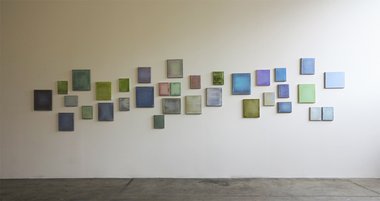
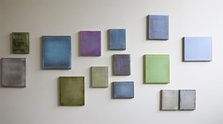
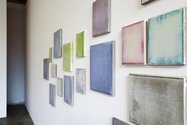

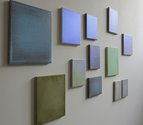
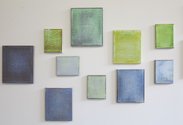
 Advertising in this column
Advertising in this column Two Rooms presents a program of residencies and projects
Two Rooms presents a program of residencies and projects



This Discussion has 0 comments.
Comment
Participate
Register to Participate.
Sign in
Sign in to an existing account.